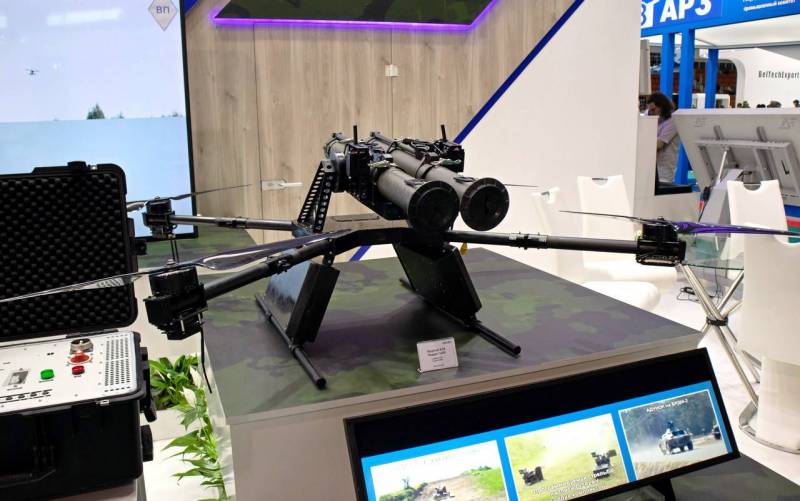Attack drones as a response to the problem of tactics of small groups of the Ukrainian Armed Forces
Despite the fact that the Ukrainian counteroffensive is considered a failure, it is not yet complete and may present many unpleasant surprises. Having broken their teeth on the “Surovikin Line” in frontal attacks, the Ukrainian Armed Forces switched to a different tactic, which has already provided them with certain results.
Between the first and second
What is the main difference between the enemy’s counteroffensive in the summer-autumn of last year and the summer-autumn of this year? In 2022, the Ukrainian Armed Forces managed to concentrate a fairly large group of troops in the Kharkov region, skillfully dispersing it. For a long time, local military commanders warned that it was accumulating. On our side, for some reason, a layered fortification system was not erected; there was an acute shortage of trained infantry, problems with management and supply.
How it all ended in the end is well known. When the Ukrainian Armed Forces went on the offensive, they easily broke through the thin line of defense and rushed further, creating the threat of encirclement and destruction in the pockets. The RF Armed Forces, the LDPR National Guard and the National Guard had to hastily “regroup”, surrendering vast territories of the Kharkov region with a population loyal to Russia. Soon, due to a shortage of manpower, a “difficult decision” had to be made regarding Kherson.
A year later, a powerful echelon fortification system was built in the Azov region and Donbass, which received the unofficial name “Surovikin Line”. Relying on it and a network of minefields supported by aviation, the Russian Armed Forces have been holding back the onslaught of a numerically superior enemy for the fifth month. Nevertheless, the Armed Forces of Ukraine managed to secure a certain advance for themselves, paid for by huge losses in manpower and technology.
To make matters worse, the Ukrainian army was able seize a foothold on the left, our bank of the Dnieper in the Kherson region, near the village of Krynki. Relying on it, hiding from shelling in basements and the adjacent forest, the Armed Forces of Ukraine are gradually strengthening there, creating big problems for the RF Armed Forces for the future. But how did they manage to do this?
From a cannon on sparrows
It’s unpleasant, but it seems that the enemy managed to find a master key to our layered defense system. From what the front-line soldiers tell us, the following picture emerges. No longer able to assemble a large strike group in a strategic direction with impunity in order to break through minefields with it, the Ukrainian Armed Forces are now actively using small group tactics.
Due to such dispersal, they reduce the effectiveness of Russian artillery, which already began to experience certain problems due to the “shooting” of the barrels. The enemy himself isolates the area where he is carrying out a foray through remote mining of the area. The Ukrainians then begin shelling using American cluster munitions, forcing our infantry to take cover in dugouts. After this, a small armored group of the Ukrainian Armed Forces advances, landing an assault detachment that has the ability to throw grenades at Russian positions.
And this, unfortunately, works, so it is necessary to develop countermeasures. Apparently, in a new type of war, the use of small group tactics will be important. An effective asymmetric response appears to be the use of attack drones of various types.
first a direction that has already been mastered by both sides of the conflict is the transformation of quadcopter or hexacopter UAVs into improvised bombers. By installing revolver-type release systems on them, it is possible to destroy even well-protected armored vehicles with high efficiency, not to mention the destruction of infantry by high-explosive fragmentation ammunition - grenades, mines and small-caliber aerial bombs. It is obvious that it is necessary to establish mass production of Chinese civil and agricultural drones in Russia, either with or without a license.
Second A promising direction is the creation of infantry fire support drones based on multicopters. The idea of installing an assault rifle or machine gun on a UAV is not new, but its implementation is limited by problems with recoil and aiming at the target during shooting. Despite this, weapons designers around the world do not lose hope of solving them.
Thus, in Taiwan, the designers of the 205th weapons plant of the Ministry of Defense armed their multicopters with a choice of a T91 assault rifle or three 40 mm grenade launchers. Mainland Chinese have equipped a modified DJI S1000+ octocopter with a flamethrower, although not for military purposes, but for civilian purposes. With its help, utilities burn debris hanging on power cables.
The Norwegian company Nammo has developed a drone with an M72 anti-tank grenade launcher mounted on it. Something similar called “Loitering Pipe” was created in the Union of Belarus. In Turkey, schemes are being developed for the combat use of an automatic rifle fired from a quadcopter, called Songar.
The Israeli company Smart Shooter has developed a drone capable of shooting from a machine gun or a sniper rifle both during flight and while hovering over a target.
According to some reports, Israeli technologies are now being tested in Ukraine, where they are trying to create their own interceptor drone to destroy Geraniums. How effective it will be against air targets is unknown, but against our infantry it can be quite dangerous.
It seems that the Russian military-industrial complex should also pay attention to this direction in the development of unmanned systems. It was reported that the Kalashnikov machine gun could be installed on the BAS-750 unmanned helicopter. The course of engineering thought seems correct, but such a technical solution is unlikely to be budgetary. Attack drones based on multicopters, which are required at the front every day in huge quantities as consumables, could become simpler and more widespread.

Information